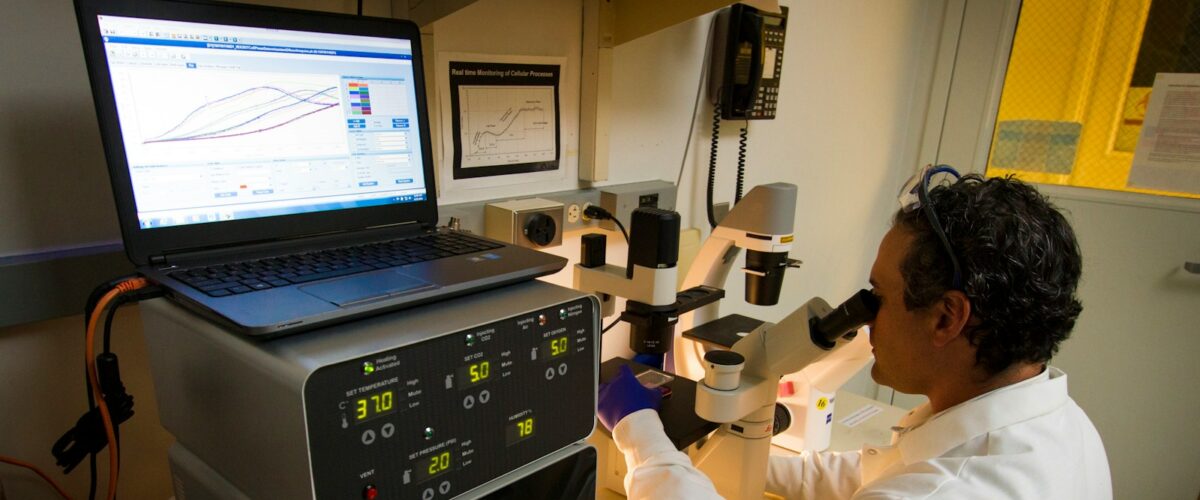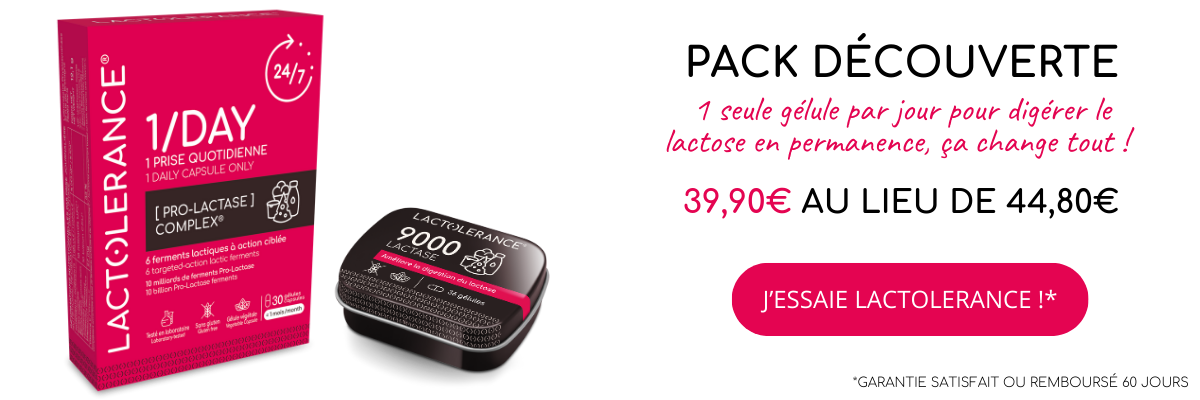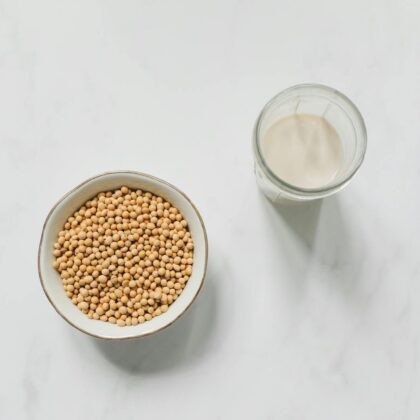
An international standard, the Food Chemical Codex (FCC) is used to measure enzyme activity.
In the case of food supplements formulated for people with lactose intolerance, the FCC identifies the capacity of lactase to break down lactose to digest it better. If you are lactose intolerant, you should therefore use this standard as a guide when choosing your lactase supplementation method.
What is the role of the enzyme lactase?
To understand the function of lactase within the body, you first need to understand what's behind lactose.
Lactose is the milk sugar. This complex sugar is only digestible when broken down into 2 simple carbohydrates: glucose and galactose. This is precisely what lactase produced in the small intestine, which dissociates the lactose to make it available to the digestive tract.
However, the body's production of lactase decreases with age. It reaches a residual level of 5 to 10%, on average, in adulthood, which is why around 75% of the world's population is actually affected by lactose intolerance.
This food intolerance is manifested by digestive discomfort of varying degrees linked to the consumption of lactose-rich foods (dairy products, cold meats, processed products, etc.).
In this context, lactase supplementation by means of targeted food supplements helps to compensate for the lack of lactase in the body to improve the quality of life of lactose intolerant people. The CFC plays a central role here, enabling individuals to find the supplements best suited to their level of digestive discomfort.
How is the lactase enzyme measured?
As a general rule, people prone to alactasia (the other name for lactose intolerance) can consume up to 12 g of lactose per day without suffering the inconveniences of intolerance: bloating, gas, constipation, diarrhoea, etc.
To support all lactose intolerant profiles, our laboratory has developed the following food supplements, for example LACTOLERANCE 4500 and LACTOLERANCE 9000. The numbers "4500"and9000The term "lactose" refers here to the FCC and, by extension, to the amount of lactose that can be assimilated by the body.
As a guide, 1,000 FCC corresponds to 5g of digestible lactose.
A LACTOLERANCE 4500 supplement can therefore assimilate 22.5 g of lactose, while a LACTOLERANCE 9000 supplement offers the possibility of consuming up to 45g of lactose per capsule!
In other words, the former is suitable for moderate intolerants, while the latter is aimed at individuals with a very high sensitivity to lactose.
Please note: FCC remains a theoretical figure measured in vitro in the laboratory. It is necessary to adapt the number of capsules to the level of intolerance and the quantity of lactose to be absorbed. Our top 10 foods richest in lactose will help you to identify the food most likely to cause adverse reactions, particularly if you are planning a meal in a restaurant or with friends.
Don't forget the LACTOLERANCE 1/DAY for even greater peace of mind!
Make a fresh start with lactose 🚀

Hello, I'm Vincent
Like you, I'm lactose intolerantI know exactly what you're going through and the difficulties you encounter on a daily basis. For over 10 years, I've been helping our customers to use our dietary supplements and giving advice and tips on how to improve their digestive comfort. I'm also a keen cook and gourmet, so you'll find my favourite recipes for a lactose-free diet in this blog.
Lactose intolerance is not inevitable! With LACTOLERANCE you can digest with complete peace of mind





